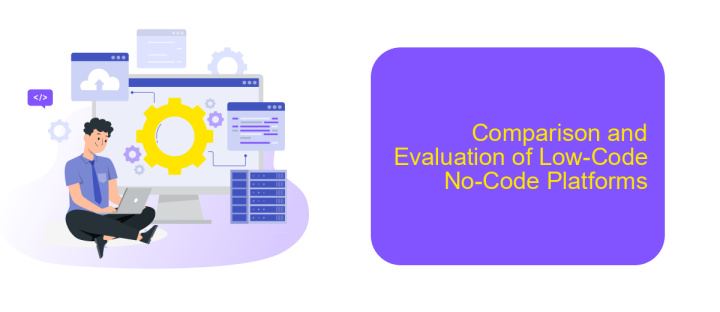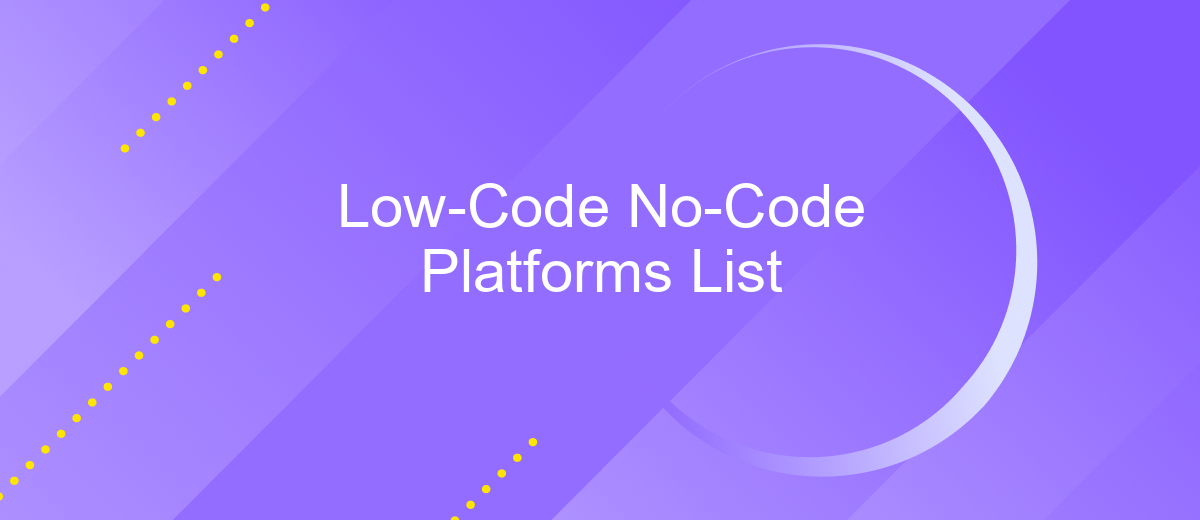Low-Code No-Code Platforms List
Low-code and no-code platforms are revolutionizing the way businesses approach software development. These innovative tools empower users with little to no programming experience to create robust applications quickly and efficiently. In this article, we provide a comprehensive list of the top low-code and no-code platforms that can help streamline your development process and drive digital transformation.
Introduction to Low-Code No-Code Platforms
Low-code and no-code platforms are revolutionizing the way businesses develop software by enabling non-technical users to create applications through intuitive, visual interfaces. These platforms minimize the need for extensive coding, making it easier for organizations to accelerate their digital transformation efforts.
- Low-code platforms: These platforms require minimal hand-coding and are designed for developers to build applications faster.
- No-code platforms: These are even more user-friendly, allowing business users with no coding experience to create applications using drag-and-drop features.
- Integration tools: Services like ApiX-Drive facilitate seamless integration between different applications and services, enhancing the functionality of low-code and no-code solutions.
By leveraging low-code and no-code platforms, businesses can significantly reduce development time and costs, while empowering a broader range of employees to contribute to software development. This democratization of application development fosters innovation and agility, enabling organizations to respond more quickly to market changes and customer needs.
Benefits and Use Cases of Low-Code No-Code Platforms

Low-Code No-Code platforms offer numerous benefits, making them highly attractive for businesses of all sizes. They significantly reduce the time and cost associated with software development by enabling users to create applications without extensive coding knowledge. This democratization of app development allows non-technical staff to contribute to digital transformation initiatives, enhancing overall productivity. Additionally, these platforms often come with pre-built templates and drag-and-drop interfaces, which streamline the development process and ensure faster deployment of applications.
One of the key use cases for Low-Code No-Code platforms is the integration of various business systems and applications. For instance, tools like ApiX-Drive simplify the process of connecting different software solutions, enabling seamless data flow and automation. This is particularly beneficial for organizations looking to enhance their operational efficiency without investing heavily in custom development. Moreover, these platforms are ideal for rapid prototyping, enabling businesses to quickly test and iterate on new ideas, ensuring they stay competitive in a fast-paced market.
List of Top Low-Code No-Code Platforms

Low-Code and No-Code platforms are revolutionizing the way businesses build applications by enabling users to create software with minimal coding knowledge. These platforms offer a variety of tools and integrations to streamline development processes and reduce time-to-market.
- OutSystems: A robust low-code platform that allows for rapid application development and deployment, offering extensive integration capabilities.
- Mendix: Known for its collaboration features, Mendix enables teams to work together seamlessly to build and deploy applications quickly.
- AppSheet: A no-code platform by Google that empowers users to create mobile and web apps using data from various sources like Google Sheets and Excel.
- ApiX-Drive: This tool simplifies the process of integrating various services and automating workflows, making it an essential addition to any low-code or no-code toolkit.
- Bubble: A no-code platform that offers a visual programming interface, allowing users to design and launch fully-functional web applications without writing code.
These platforms are designed to democratize software development, making it accessible to a broader audience. Whether you're a seasoned developer or a business professional, low-code and no-code platforms can significantly enhance your productivity and innovation potential.
Comparison and Evaluation of Low-Code No-Code Platforms

Low-code and no-code platforms have revolutionized the way businesses approach software development, offering a range of tools that cater to both technical and non-technical users. These platforms simplify the development process by providing drag-and-drop interfaces, pre-built templates, and automated workflows, making it easier to build applications quickly and efficiently.
When comparing low-code and no-code platforms, several factors need to be considered, including ease of use, scalability, integration capabilities, and cost. Each platform has its unique features and limitations, which can significantly impact the overall user experience and project outcomes.
- Ease of Use: Platforms like Appgyver and Adalo offer intuitive interfaces that are ideal for beginners.
- Scalability: OutSystems and Mendix provide robust solutions that can handle large-scale enterprise applications.
- Integration Capabilities: ApiX-Drive excels in integrating various services, making it easier to connect different systems seamlessly.
- Cost: Bubble and Glide offer competitive pricing models suitable for small to medium-sized businesses.
In conclusion, choosing the right low-code or no-code platform depends on your specific needs and project requirements. By evaluating these factors, businesses can select a platform that not only meets their current needs but also scales with their future growth. ApiX-Drive, for instance, stands out for its integration capabilities, making it a valuable addition for businesses looking to streamline their workflows.


Future of Low-Code No-Code Platforms
The future of Low-Code No-Code platforms is poised for significant growth and evolution, driven by the increasing demand for rapid application development and the democratization of technology. As more businesses recognize the value of empowering non-technical users to create and deploy applications, these platforms will continue to evolve, offering more advanced features, improved usability, and greater scalability. This will enable organizations to respond more quickly to market changes and innovate at a faster pace, ultimately leading to a more dynamic and competitive business environment.
One of the key trends shaping the future of Low-Code No-Code platforms is the integration of artificial intelligence and machine learning capabilities. This will allow users to build smarter applications that can analyze data, automate processes, and provide insights without requiring extensive coding knowledge. Additionally, platforms like ApiX-Drive will play a crucial role in streamlining integrations between various services and applications, making it easier for businesses to connect their tools and automate workflows. As these technologies continue to advance, we can expect Low-Code No-Code platforms to become even more powerful and versatile, transforming the way we develop and use software.
FAQ
What are Low-Code and No-Code platforms?
Who can benefit from using Low-Code No-Code platforms?
Can Low-Code No-Code platforms be used for automation and integration?
What are the limitations of Low-Code No-Code platforms?
How do Low-Code No-Code platforms handle data security?
Apix-Drive is a universal tool that will quickly streamline any workflow, freeing you from routine and possible financial losses. Try ApiX-Drive in action and see how useful it is for you personally. In the meantime, when you are setting up connections between systems, think about where you are investing your free time, because now you will have much more of it.

